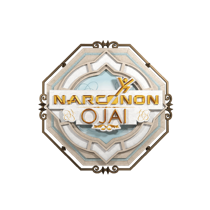Is Relapse Really Inevitable?
Part I of IV of the series: “Is Relapse Really Inevitable?”
When you’re talking to people in the drug rehabilitation field, you hear a lot about relapse. “Eighty to ninety percent of people who complete rehab will relapse,” says one person. “It takes as many as ten times through rehab to succeed,” says another. Does this really have to be the case? Or is it simply because some rehabilitation programs do not address enough of the damage caused by heavy drug consumption?
Let’s take a look at what people are struggling with when they enter rehab and see how these specific points of damage can be addressed.
Here’s Part One of this series of four articles taking a look at this aspect of rehabilitation.

Intense Cravings
Cravings are just a fact of addiction and early recovery. An addicted person is going to crave drugs. He is likely to have intense dreams about using drugs where he’s sure he is high again. Those first moments when he wakes up are going to be hard.
Also, at the times he would normally use drugs or drink, the cravings are going to be sharp. For example, when he hits some challenging situation in life or he runs into his old drug-using buddies or he’s lonely, tired, hungry or discouraged. After he goes through rehab, he doesn’t have drugs any more to make those feelings go away.
Cravings have both physical and psychological sources. Both these sources must be addressed to prevent relapse.
How the Narconon Program Addresses Cravings
Physical cravings can be greatly improved or even eliminated with the New Life Detoxification, a thorough, sauna-based detox that is the first step on the Narconon rehab program. Each person exercises moderately to get the blood moving, take a strict regimen of nutritional supplements and spends supervised time in a sauna. This combination enables the body to begin flushing out old toxins stored deep in the fatty tissues of the body.
This process continues for a few weeks. At the end, it’s very common for our clients to feel refreshed and more energetic. The lethargy they felt while addicted is very often gone. They have brighter outlooks and this prepares them to start learning and making changes in their lives and their thinking.
Most importantly, those completing this step usually talk about their reduced physical cravings. Some people even say cravings are gone and they may also note that their drug dreams have ended. Make no mistake; this is a great relief. It means that Narconon Ojai clients do not need to fight physical cravings every single day of their sobriety.
Psychological cravings require an entirely different solution. When a person is addicted, he is not only physically dependent on addictive substances, he (or she) also relies on them to get through each day. Without them, he feels he can’t tolerate his life or environment. He only feels “normal” when he’s consumed one of his drugs of choice. This dependence must be overcome for rehabilitation to be stable.
Breaking free from this dependence isn’t something that happens overnight. But this is where rehabilitation really occurs. A major step forward for a person who needs this independence is the step called Objectives. This is a series of exercises designed to bring a person’s attention out of the past and into the world around him. Trauma, pain, grief, anger, guilt—these are all rooted in the past. Day by day, as each person completes this series of exercises, he is strengthened. The present begins to look more beautiful. The horror of the past begins to fade away.
Each day, he builds himself a new, stable structure for living that’s rooted in the real world. One step at a time, he becomes more objective. This makes him stronger and brings out his own innate abilities to interact with all parts of his life, family and even the staff and other clients in rehab.
As he is strengthened, he becomes more capable of learning the specific skills he will need to stay sober. These skills will be taught in the Life Skills portion of the Narconon drug rehab program.
Keep reading Part Two to learn how these Life Skills are rehabilitated in each person.


